You know it’s crucial to provide your dog with chewing options. And you don’t want to offer up your shoes. But when you see your favorite canine with a chew toy, you get worried. They’re bound and determined to devour it! Maybe you find yourself removing broken pieces all the time. You want to keep your pup’s teeth and jaws healthy. But a trip to the vet? That’s not in the cards. Good thing there are dog chews out there that bridge the gap!
The Need to Chew
Dogs chew. It’s part of their nature. In wild canines, chewing helps keep teeth clean and sharp. And that instinct remains to this day. Of course, you take the time to brush your dog’s teeth. But your pup probably hunts around for something to gnaw on anyway. Why?
They’re still working to keep their teeth and jaws healthy. You can explain to them the toothpaste is doing the job, but they may not understand. The programming in their doggie brain says, “chew.” And without SOME kind of dog chew, they may turn to dangerous substitutes (such as sticks from the yard).
Alternative Reasons
You can also see dogs reaching for something with their teeth for other reasons. And it’s not always a GOOD reason. For instance, when you have a bored dog. Intelligent breeds will come up with ways to engage their minds. It can lead to destructive behavior – including chewing objects you DON’T approve of. Dog chews divert their attention away from those behaviors, especially if you combine them with a puzzle toy.
But nervousness can play a part, too. When you leave for work, your dog may worry when you’ll return. Chewing provides comfort. Unfortunately, if you haven’t offered an approved dog chew, they may start to gnaw on the wire of their dog crate instead. This can damage their teeth and gums – to say nothing of the kennel!
Dog Chew Safety
Unhappily, not every dog chew is created equal. Bones satisfy a dog’s urge to chomp down on something, but they’re HARD. A pup can fracture or break a tooth. And you DEFINITELY can’t leave a dog unsupervised with a bone.
Even synthetic chews pose potential problems. If a piece breaks off, it may lead to cuts within the mouth. Or, worse, your dog may swallow it. This can lead to an obstruction within the GI tract. And the longer your dog gnaws on the chew, the more bacteria collect on the surface. If you don’t take the time to clean it? You could end up with a lovely bacterial colony that could infect your dog, you, and your family.
It’s essential to consider the safety of any dog chews you decide to offer your canine companion.
Choosing a Dog Chew
There are THOUSANDS of dog chews available out there. Some are inedible, but plenty are edible. They’ll offer your dog time to gnaw away while still giving them a delicious treat. But you want to look for some key features when you start your shopping:
- Hardness: Press your thumbnail into the surface. You should feel a slight give. If not? The dog chew is much too hard. You’re courting a possible tooth fracture.
- Softness: Using the same test, you don’t want your thumbnail to go deep into the surface. A soft chew means your dog will bite through it in no time. It may make a nice treat, but your dog won’t get any chewing satisfaction.
- Coating: Flavor coatings have a high fat content that will lead to GI upset. That “smoky” smell may appeal to your pup, but the dog chew will lead to a mess you’ll need to clean later.
- Size: Always make sure you select a dog chew size appropriate for your dog. Too small, and they may choke on it. Too big, and they could strain their jaw.
- Shape: Be cautious about any dog chews that come in rings. They may end up stuck on your dog’s teeth or muzzle.
Rawhides
Rawhide dog chews are the bane of the veterinary world. While technically edible, you should AVOID them. They often come coated with flavoring, which can lead to GI upset. But it gets worse from there.
Many rawhide dog chews end up contaminated with E. coli or Salmonella. Your dog may need hospitalization if the infection is severe.
And while some dogs thoroughly chew the pieces they break off, most don’t. This means they swallow a large portion of rawhide that turns into a jagged obstruction. You end up paying for a surgery you weren’t anticipating. It’s better to avoid these dog chews in the first place and focus on those made from ingredients dogs CAN digest.
Best Dog Chews
In contrast to your dog’s everyday treats, dog chews are special. They’re still a delicious snack, but they also provide gnawing time. Your dog gets to work their teeth and jaws, keeping them happy and occupied with an activity. You should still supervise them, though. While edible, it’s still possible they may break off a large piece. But they provide a better chewing option than marrow bones. And they’re not as dangerous as sticks. (Or, you know, your shoes, the furniture, or the trashcan lid)
When it comes to dog chews, Best Bully Sticks always comes out on top. These tendons come from 100% natural grass-fed beef. The dried texture helps scrape plaque from your dog’s teeth while they chew, helping with your dental care routine. NO chemicals go into the drying process, either, giving you peace of mind. And your pup gets a nice boost of protein. They come in two sizes (6″ and 12″) with three package sizes to choose from.
Downsides? Dogs LOVE these dog chews. And they often chomp down and swallow large pieces. The tendons ARE digestible, but you’ll want to watch carefully, just in case. And they’re on the pricier side, so you may want to reserve them for occasional offerings.
The Good
- 100% grass-fed beef tendon
- Texture scrapes plaque from teeth
- 74 calories/stick
- Available in 2 sizes
- Available in 3 package sizes
The Bad
- Expensive
- Dogs may bite off large pieces
If you’d like a little extra with your dog chews, consider Bones & Chews. The gullet? It’s 100% cow esophagus. They’re treated with irradiation to remove all parasites and bacteria, so you don’t need to worry about possible contamination. And the gullet sticks are a natural source of chondroitin, an essential supplement for dog joint health. They have a hollow, springy texture which makes for a fun chewing experience for dogs. And you can order three different package sizes (even a single count – if you want to wait and see what your dog thinks).
The downsides? This isn’t the toughest dog chew out there. Some pups turned them into long, stringy pieces. Others ended up chomping them in quick bites. You may want to take advantage of that single order and see what happens with your canine. And, unhappily, it’s only available in one length, which means some pups are going to miss out on the fun.
The Good
- 100% cow esophagus
- Contains chondroitin
- 45.5 calories/stick
- Available in 3 package sizes
The Bad
- Only available in 1 size
- Dogs may bite off large pieces
- Dogs may peel into stringy pieces
EcoKind is one of those dog chews that uses 100% yak cheese. Yes, yak cheese. It’s high in calcium, but it DOESN’T contain lactose, which can upset a dog’s stomach. They avoid any other ingredients or preservatives, too. It’s dried, smoked cheese, and nothing more. And they’re sturdy chews with a crunchy texture pups adore. The pieces range in size from 6″-8″, and you can order bags ranging from one pound up to five pounds. (Or, if you want, one stick is available)
So what are the downsides? While the single stick is an excellent option, that particle price is INSANE. You may want to avoid that for one of the bags – they’re more reasonably priced. But think about your dog’s dental health before you bring this dog chew home. Yak cheese? It’s HARD. And if your pup has any kind of problem with their teeth, the chew may make things worse. You CAN microwave them for 90 seconds to help (let it cool before giving it to your dog), but it’s better to skip it if you know there are already issues. And at a whopping 256 calories a stick? You need to offer these on a limited basis.
The Good
- 100% yak cheese
- Contains calcium
- Available in 5 package sizes
The Bad
- Hard
- Dogs may damage teeth
- 256 calories/stick
With Greenies, your dog gets a delicious dog chew with the benefit of a dental chew. It’s the best of both worlds! The ridges and bumps of the toothbrush shape scrape away unwanted plaque, earning the chew the Veterinary Oral Health Council (VOHC) seal of approval. And with plenty of fun flavors – including seasonal offerings like blueberry, pumpkin spice, and gingerbread – your dog won’t ever get bored. The dog chews come in four different sizes, catering to pups from 5-100 pounds. And you can buy packages in EIGHT different sizes, which helps when you want to stock up.
Our Greyhound LOVES her Greenies. It’s the only dog chew she looks forward to every day – without fail. We do change the flavors around, but she doesn’t seem to notice. It’s the texture that she enjoys.
Downsides? This IS a dog dental chew. So while it encourages gnawing time, it’s not the hardest option out there. Your dog won’t break a tooth, but they may bite through it without a problem. Check the sizing carefully. And at 90 calories a chew, they’re not the most low-calorie option out there.
The Good
- Dental dog chew
- VOHC seal
- Available in 4 sizes
- Available in 8 package sizes
The Bad
- Dogs may bite off large pieces
- 90 calories/treat
Himalayan Yak Chews are one of the biggest names in the yak cheese craze. When you read down the ingredient label, you won’t see anything artificial or alarming. They stick to four simple components: yak milk, cow milk, salt, and lime juice. They smoke and dry the chunks, resulting in a dog chew canines go crazy for. And when your dog’s gnawed it down to a small piece? Soak it in water, microwave it for 45 seconds (let it cool), and you have a brand new crunchy puff for them to snack on! That way, nothing goes to waste.
The downsides? As with other dog chews made of yak cheese, this is HARD. You want to watch out for possible dental issues with your dog. It also has a more pungent smell than some dog chews, which may upset YOU (dogs don’t seem to mind). And there’s some potential for GI upset. Make sure you oversee your dog.
The Good
- Yak cheese, milk cheese, salt, and lime juice
- Contains calcium
- Can microwave small pieces into crunchy "puff"
- Available in 3 package sizes
The Bad
- Hard
- Dogs may bite off large pieces
- Strong odor
- May cause GI upset
- 319 calories/treat
When it comes to dog chews, excessive ingredients can make you nervous. That’s where Honest Kitchen comes in. They only have ONE ingredient in their Ocean Chews: fish! You can choose from wolffish or cod, and you get a delicious human-grade, dehydrated fish skin. The fish are wild-caught from sustainable sources, too, so you’re not impacting the environment in negative ways. Your dog gets to chew away, getting a natural source of omega-3 fatty acids and fish oils. And you can choose from two sizes to best fit your pup.
We reserve these for our girl for special occasions – mainly because they also attract the cats’ attention. She adores them and happily crunches away. They DO engage her chewing attention for a long time – longer than the Greenies.
So what are the downsides? This is a more expensive dog chew option, especially as the bags go by weight and not count. And they SMELL. You WILL need to cope with the scent of fish throughout the house while your dog’s gnawing. It dissipates, but if you’re sensitive? You may want to keep windows open. (And distract cats, if you live in a mixed household)
The Good
- Wild-caught wolffish or cod
- Contains omega-3 fatty acids
- 37 calories/skin
- Available in 2 sizes
- Available in 2 package sizes
The Bad
- Expensive
- Strong odor
Jack & Pup offer a second bully stick option for you. They still source their beef tendons from grass-fed, free-range cattle, so you’re not getting anything you DON’T want. And they process everything with a boiling, roasting, and smoking process. That means no chemicals you need to worry about. They offer two sizes (either 6″ or 12″), and they come in two different package sizes. The texture’s still great for dental health, and the natural tendon is easy to digest.
Downsides? On the dog chew scale? These are EXPENSIVE. You’ll want to hold these in reserve. You’re also going to need to watch for the usual issue of dogs biting through them without a problem. They’re not the hardest dog chew out there. And at around 75-100 calories/chew, it’s a hefty treat.
The Good
- 100% grass-fed beef tendon
- Texture scrapes plaque from teeth
- Available in 2 sizes
- Available in 2 package sizes
The Bad
- Expensive
- Dogs may bite off large pieces
- 75-100 calories/stick
Everyone recognizes Nylabone for their dog toys, but they have a line of edible dog chews, too. They come in a variety of delicious flavors, letting your dog enjoy something different each time. And there’s no salt, preservatives, or artificial flavoring you need to worry about. With bumps and ridges, your pup will also help stimulate their gums and scrape away some plaque. You also have a whopping SIX sizes to choose from, making sure no breed – no matter how small or large – gets left out.
The downsides? These dog chews are on the hard side. And they run the risk of shattering into sharp pieces. You’ll want to keep a close eye on things and remove the dangerous shards. Also, some of the recipes led to GI upset. You CAN order a single chew, and you may want to go that route if you’re trying a different flavor. But don’t leave it out too long. Within a month, you MUST throw it out, or it’ll go bad.
The Good
- Texture scrapes plaque from teeth
- Available in 6 sizes
- Available in 4 package sizes
- Available in 7 flavors
The Bad
- Hard
- May shatter into sharp pieces
- May cause GI upset
- Only good for 1 month
- 149-600 calories/stick
Average bully sticks don’t work for every dog. So Pawstruck came up with the idea of braiding three strands together for a sturdier dog chew. You’re still getting the same beef tendon from free-range, grass-fed cattle without any chemicals in the processing. They simply took three strands to create a thicker, harder bully stick. This helps prevent your dog from chomping down off large pieces. But they still get to scrape plaque off their teeth! And with the options of buying in bulk, you’ll have plenty on-hand (or, you know, you can supply the neighborhood).
So what are the downsides? If you opt to buy a large amount, you will save some money, but it’s a higher expense upfront. It’s a careful balancing act, especially since 122 calories/chew is WAY too much to give all the time. They also only come in one length, which may not work if you have a smaller pup.
The Good
- 100% grass-fed beef tendon
- Texture scrapes plaque from teeth
- Available in 6 package sizes
The Bad
- Expensive
- Only available in 1 size
- 122 calories/stick
Purina produces an entire line of dog chews, but for the discerning owner, there’s the Chewnola. After all, you love your granola bars, right? And they take you some time to finish. Why not do the same for your favorite canine? You get a crunchy beef hide center for that chewing delight, coated with oats and brown rice to form three layers of doggie delight. And with eight different package options, you’re set for the entire hiking season.
Downsides? While certainly healthy, these dog chews are messy. You may want to lay down a towel or offer them outside to contain the scatter. They also only come in one size, which won’t work for most dogs. And not every dog does well with the ingredients. They DO contain sugar, which can lead to GI upset.
The Good
- 3-layered dog chew
- Available in 8 package sizes
The Bad
- Messy
- Only available in 1 size
- May cause GI upset
- 163 calories/stick
When dogs sit down with their dog chews, finding something in the center is a bonus. And Rachel Ray plays that up. In each of their three flavors, your dog chews away the outer coating to find a delicious meaty center. It’ll encourage them to devour every bite. And since everything’s safely edible, you don’t need to worry about possible obstructions. Two sizes come in four package sizes, so you’ll always have one of these chews handy.
The downsides? While your dog WILL get something satisfying to chew, these dog chews work a little better as treats. They’re on the soft side and may not work for aggressive chewers. Also, the sizing isn’t ideal for giant breeds (who may not chew them AT ALL). They’re also up there on the calorie count at 191 per soup bone. Make sure you balance out your dog’s other treats.
The Good
- Meaty center
- Available in 3 flavors
- Available in 2 sizes
- Available in 4 package sizes
The Bad
- Softer dog chew
- Not designed for larger breeds
- 191 calories/stick
What do you do if you want to offer a dog chew and you’ve considered rawhide? You turn to SmartBones. They resemble rawhide, but they’re NOT. Instead, it’s a chicken center with vegetable and peanut butter wrapped around the outside. Your dog still gets the same chewing satisfaction without worrying about biting off pieces they can’t digest. And since the outer layer is textured, it’ll help scrape their teeth. You get four different package sizes to choose from, too.
So what are the downsides? Unfortunately, this dog chew contains artificial coloring. It’s not necessary, especially when you can find plenty of dog chews WITHOUT red dye. These are also manufactured in Vietnam, which some people are suspicious about. The factory follows the same regulations and procedures as the U.S., but it makes owners concerned. And while digestible, it’s still easy for dogs to bite off large pieces. This resulted in GI upset for some dogs.
The Good
- Rawhide alternative
- 55 calories/stick
- Available in 4 package sizes
The Bad
- Contains artificial colors
- Dogs may bite off large pieces
- May cause GI upset
If you’re concerned about long ingredient lists but would prefer a vegan dog chew, why not consider Wholesome Pride? It sounds crazy, but dried slices of sweet potato make the perfect dog chew! It’s one ingredient, and there’s no meat in sight. The sweet potatoes come from North Carolina as part of a sustainability initiative, encouraging people to create treats – even when the produce doesn’t look “beautiful.” Your dog won’t care – they’ll just enjoy their chew! And at 39 calories apiece, you won’t need to worry about them packing on the pounds.
Downsides? You’re getting a dog chew without a lot of processing, so there’s A LOT of variation. This means you may get different shapes, firmness, and even sizes in every bag. You’ll want to supervise chew time closely. And while the calories are low, you don’t want to overdo it. The average of 10% of their diet from treats still applies.
The Good
- 100% natural sweet potatoes
- 39 calories/stick
- Available in 3 package sizes
The Bad
- Size, shape, and firmness vary
Chew Away
It’s essential to provide your dog with time to chew – on the RIGHT things. And while bones and toys are okay, sometimes it helps to reach for dog chews. Your dog exercises their jaw and cleans their teeth, but they also get a treat in the process. Everyone wins!
You just want to make sure you supervise – with ANY chew time. Even edible dog chews can pose a potential safety risk. Keep an eye on your furry friend while they gnaw away.

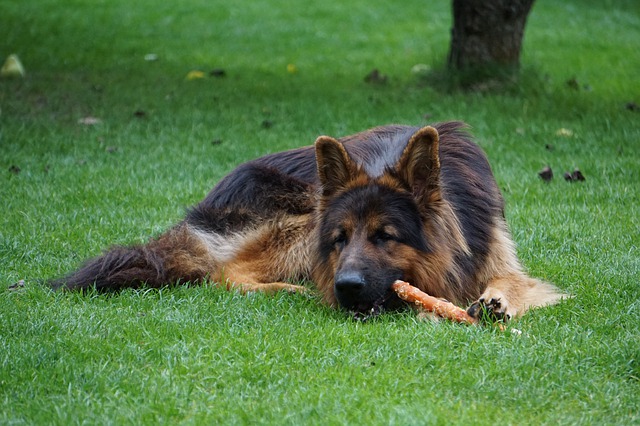
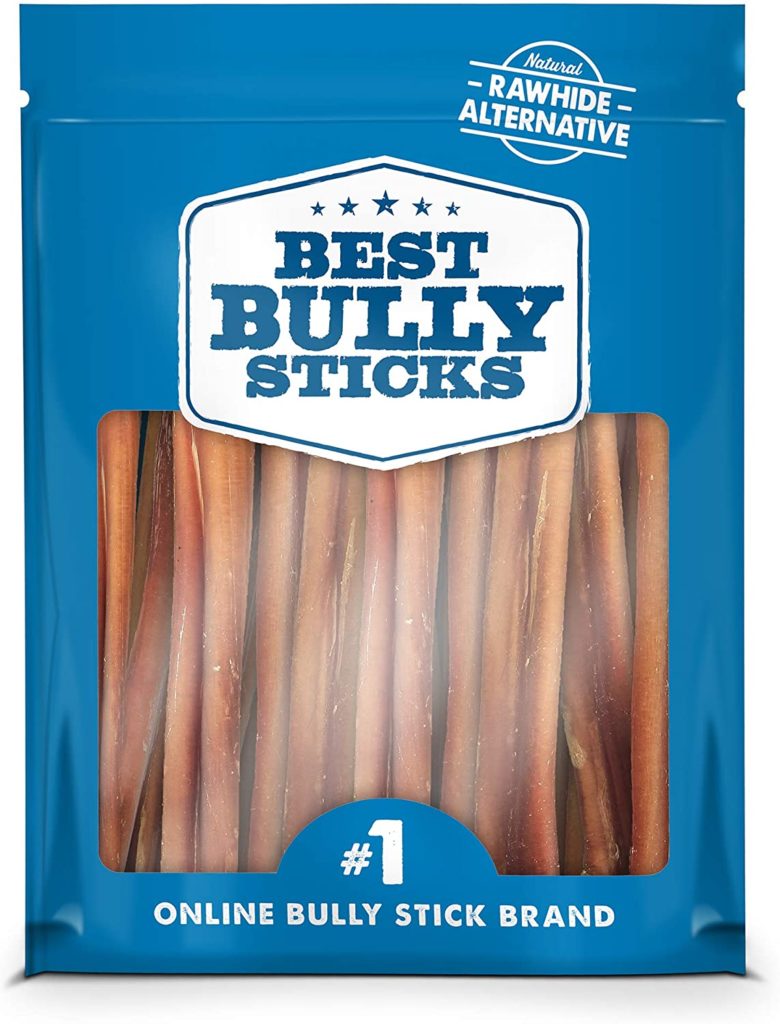
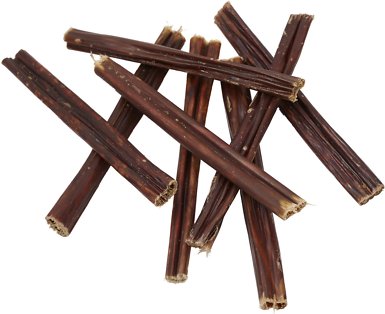
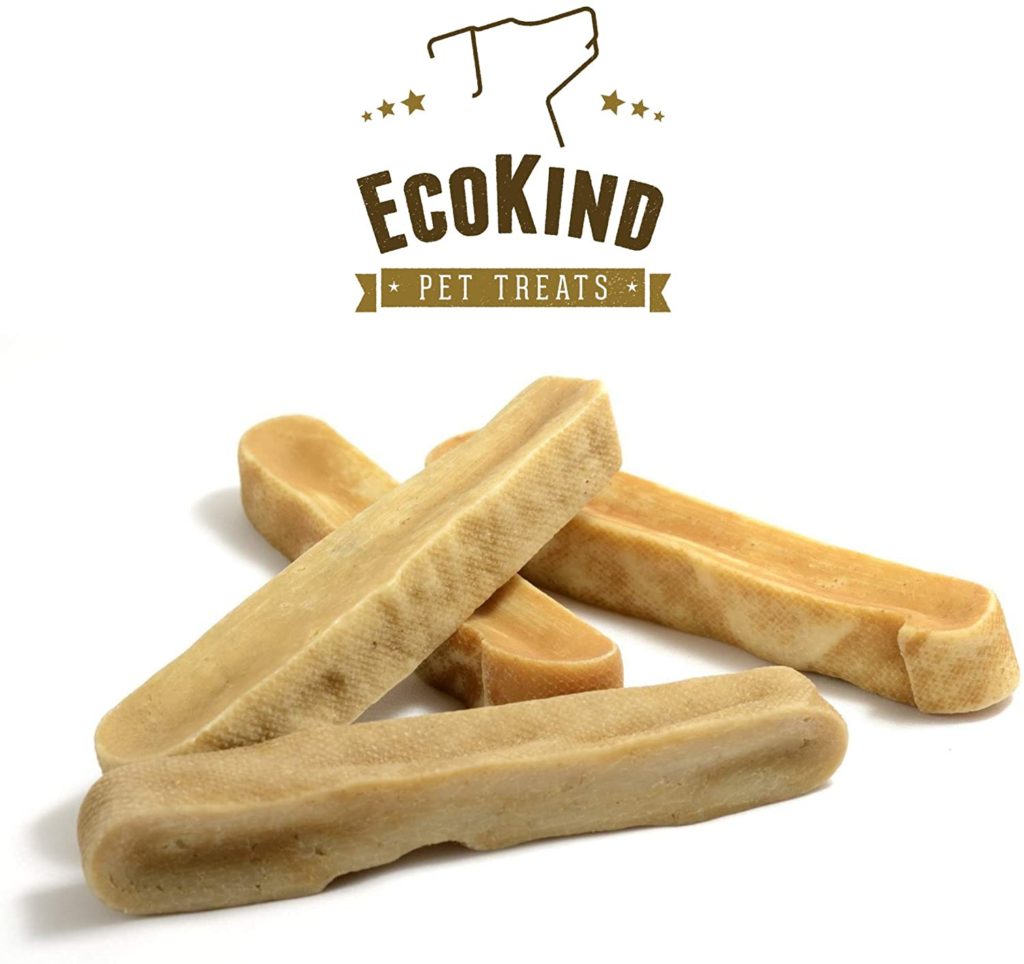
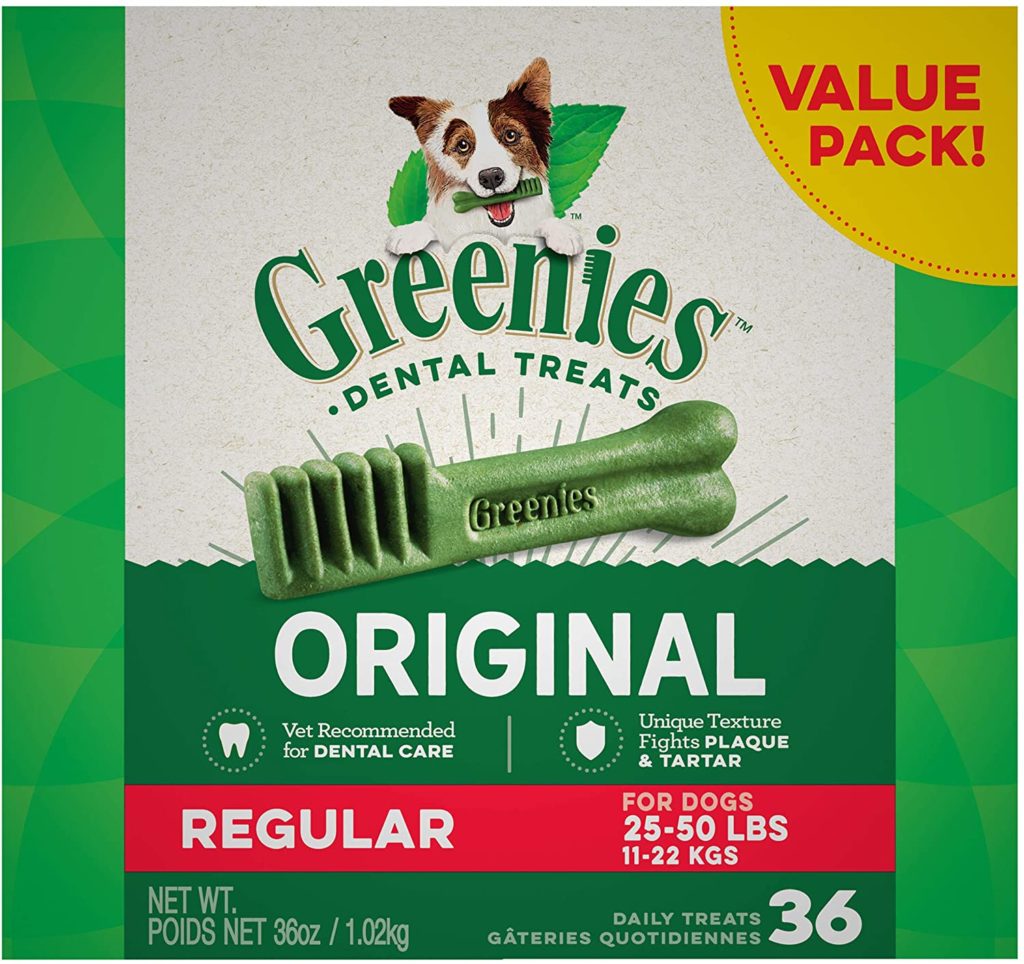
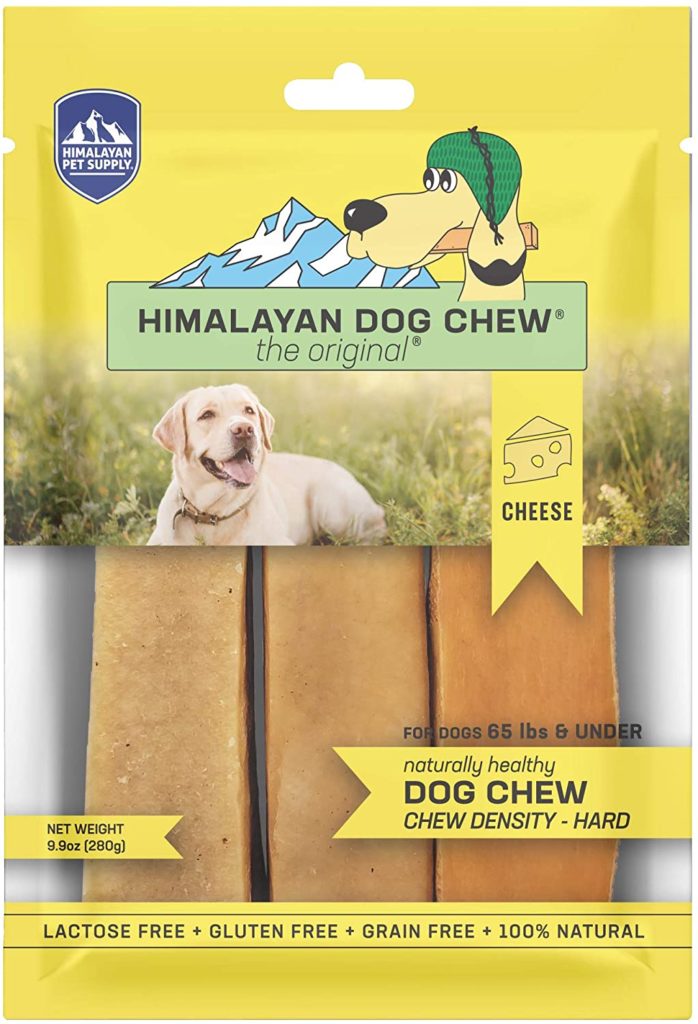
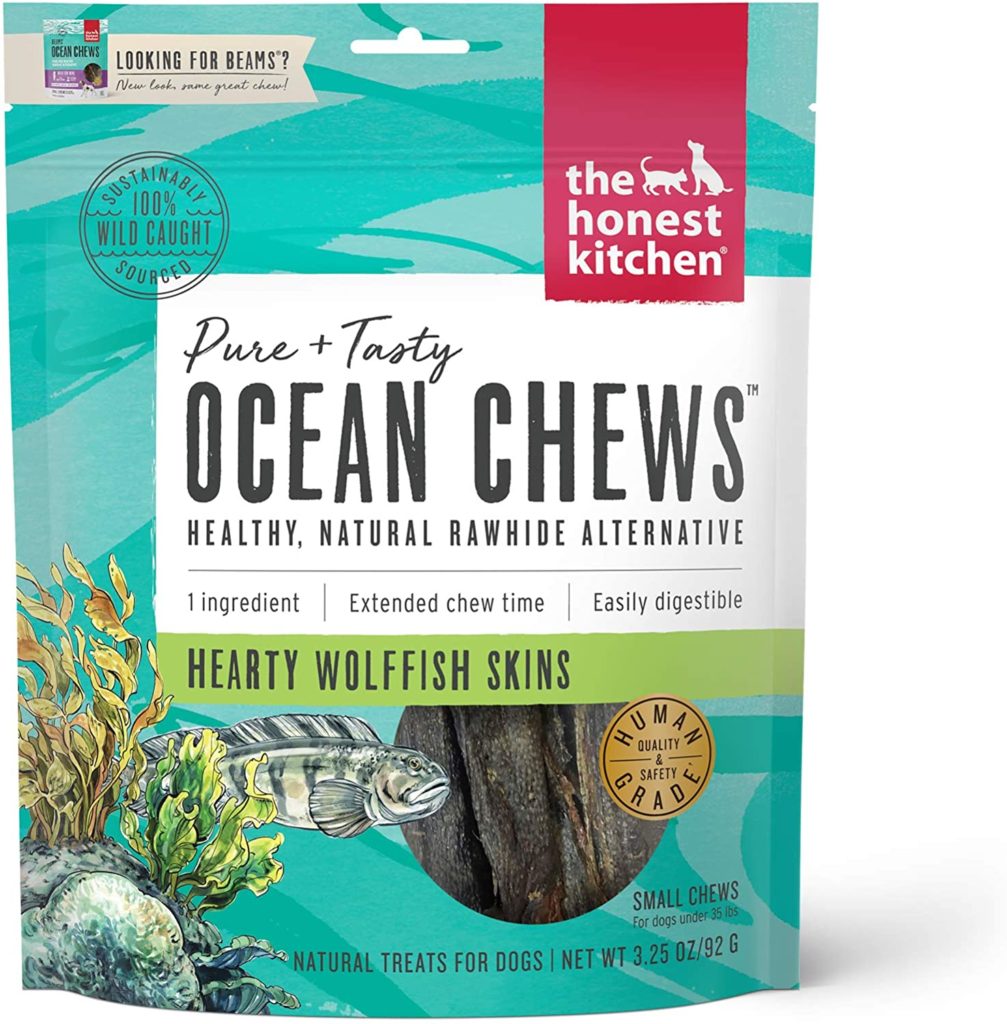
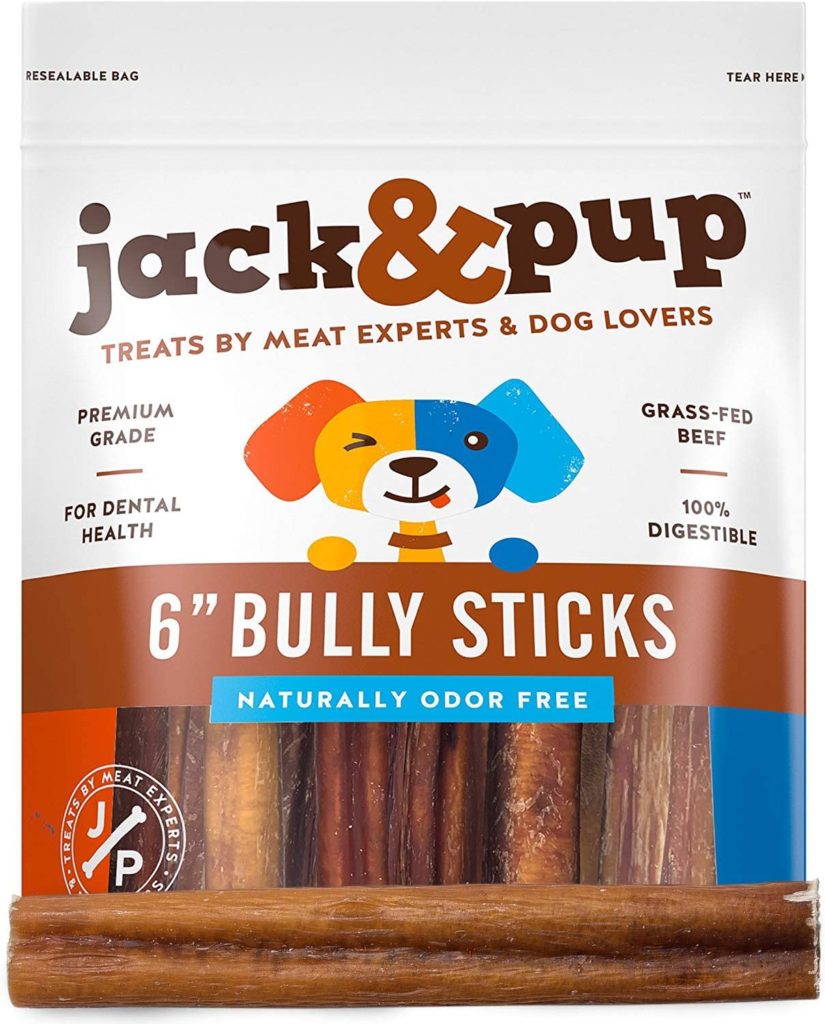
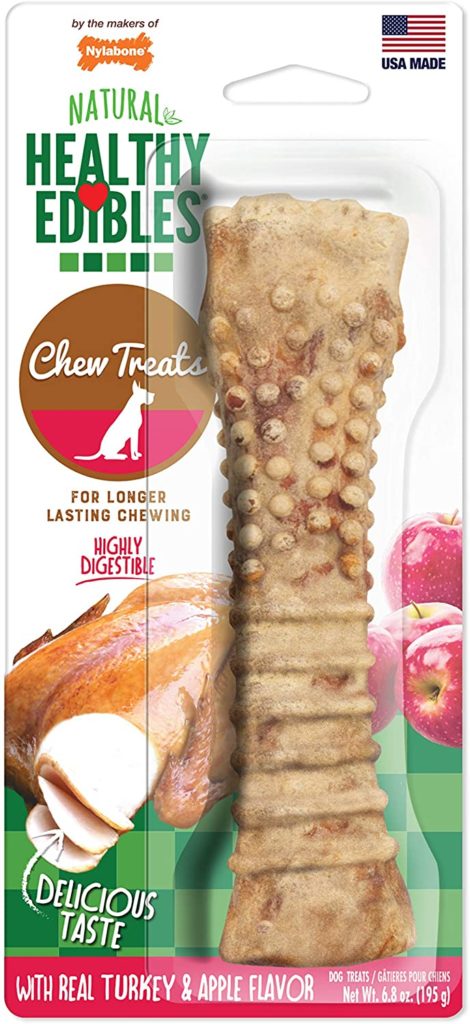
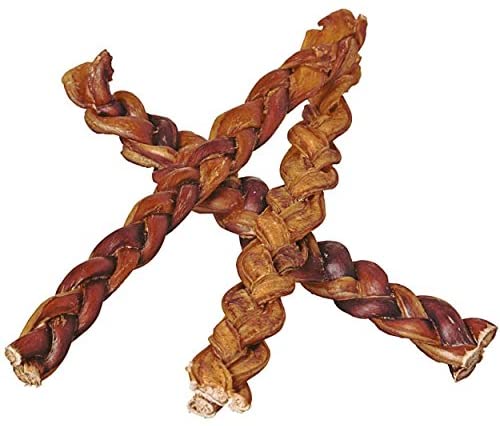
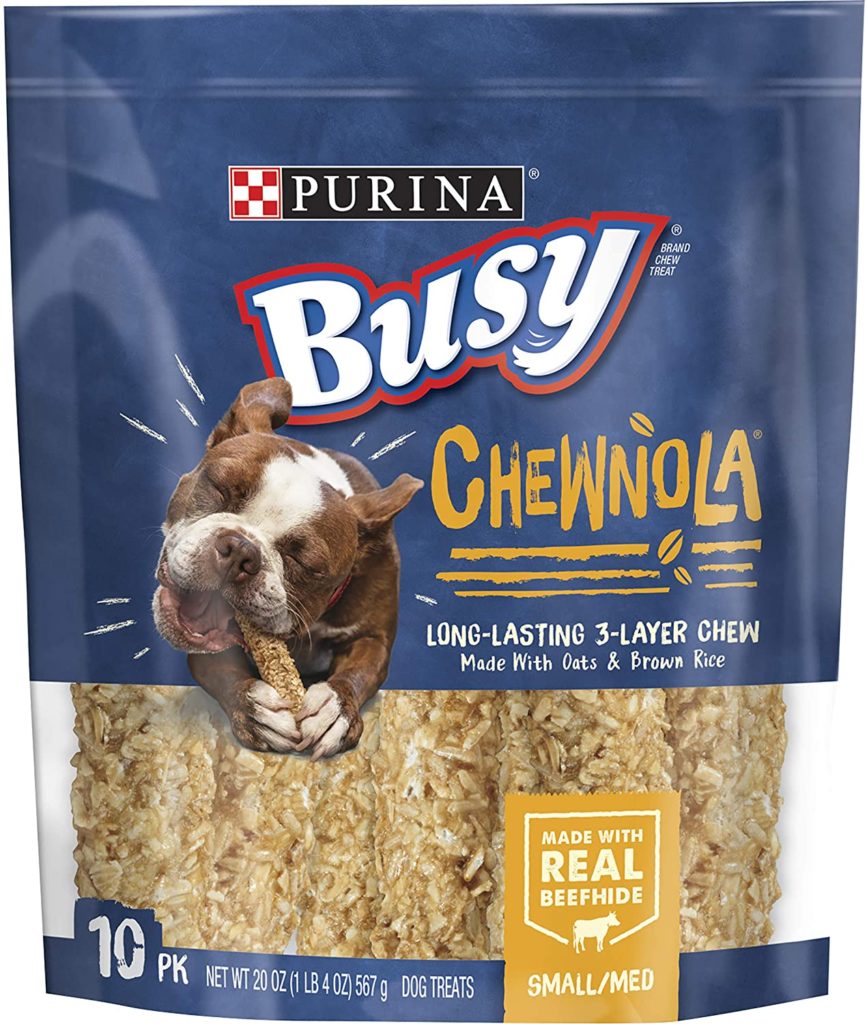
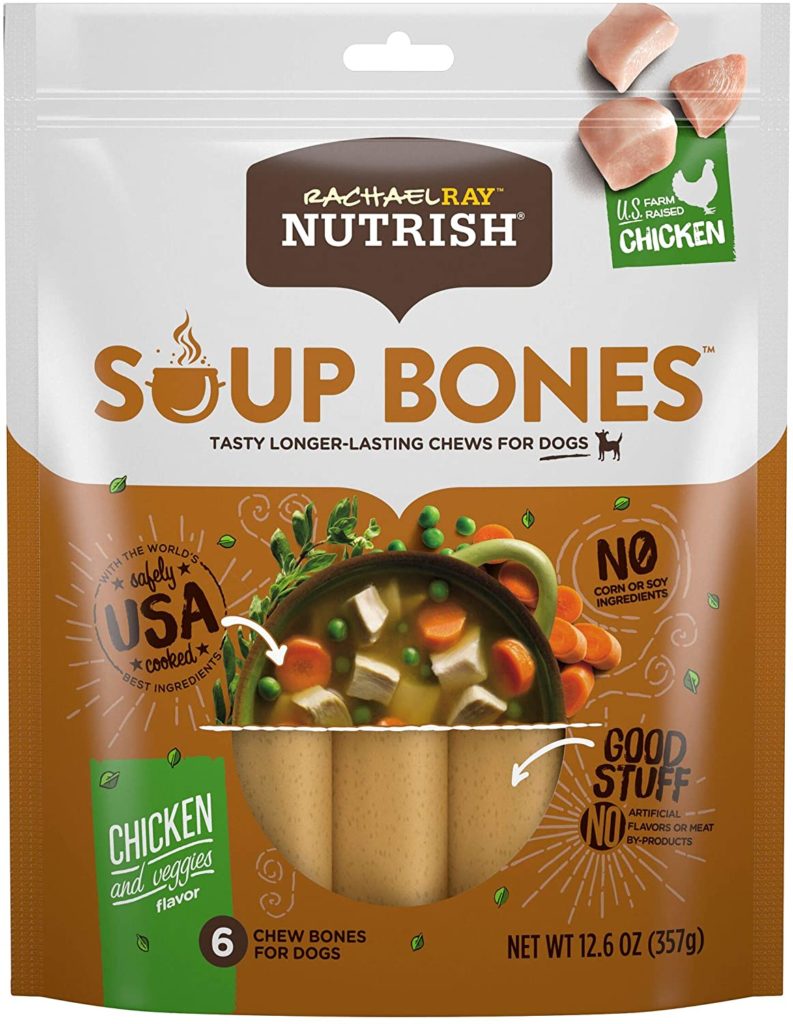
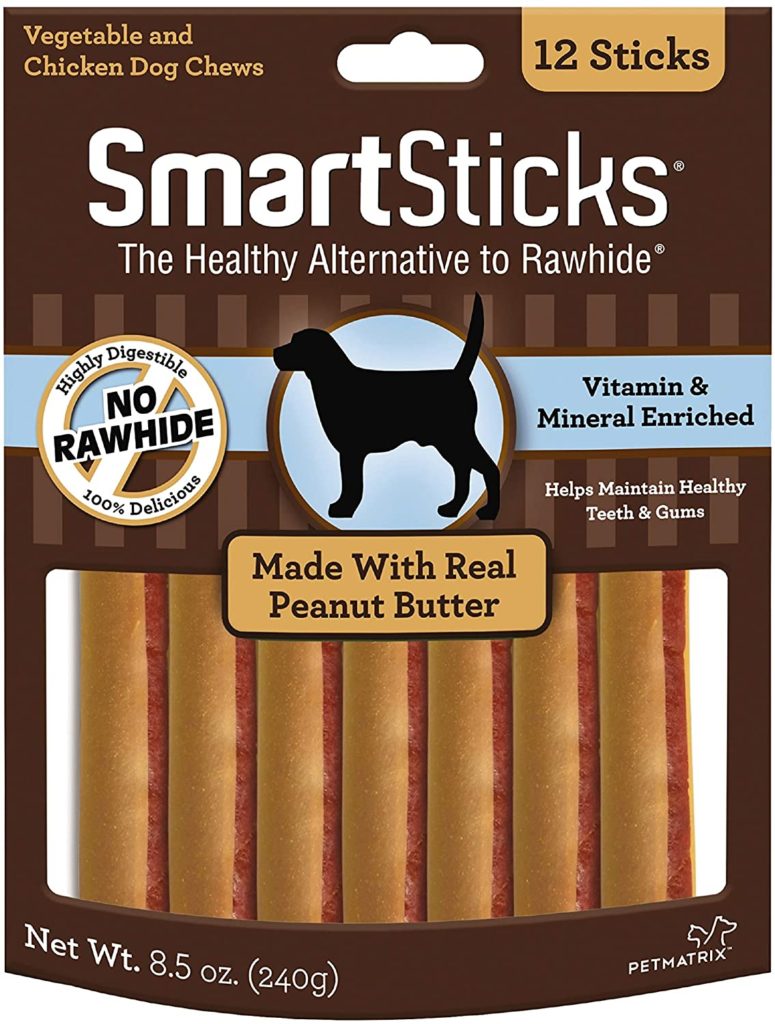
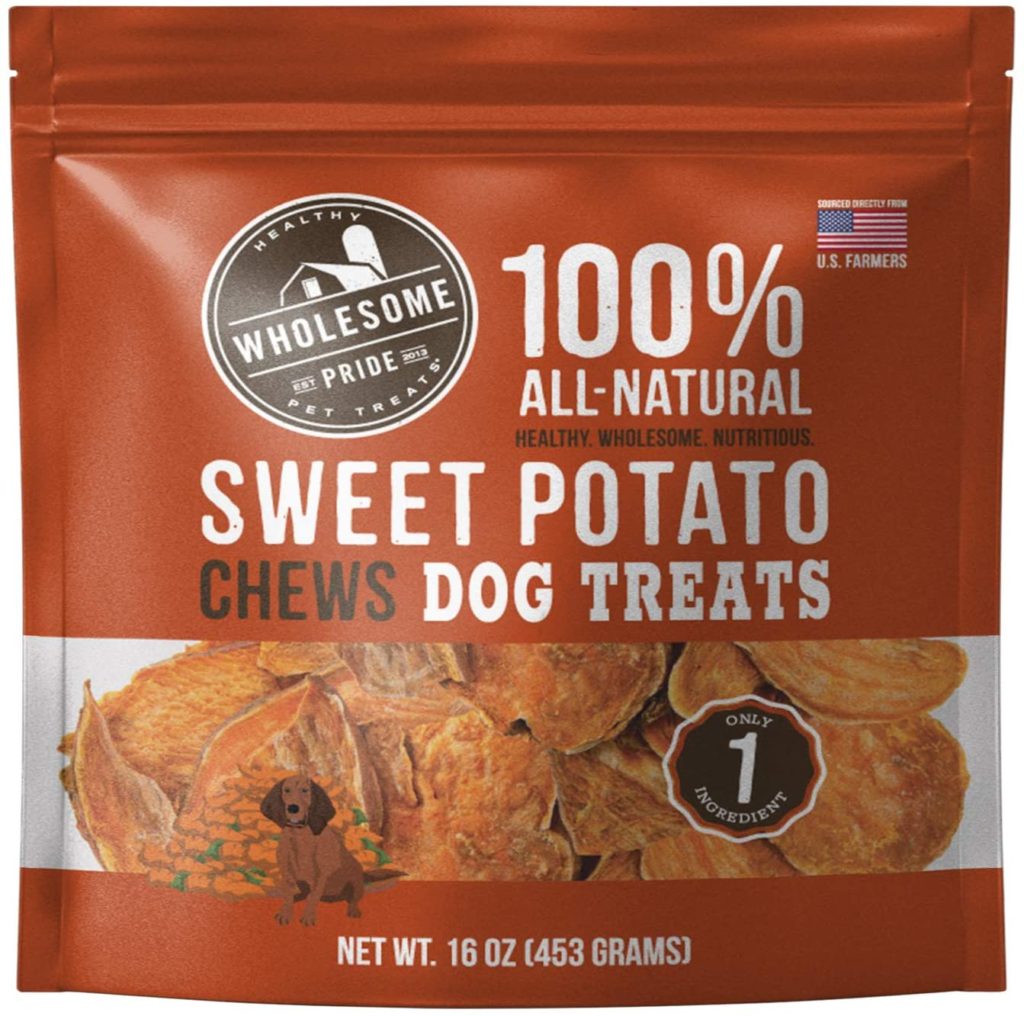

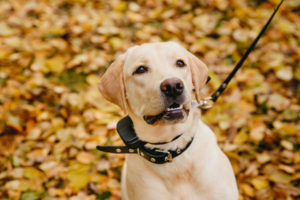


No comment yet, add your voice below!